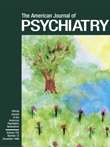Cognitive Substrates of Thought Disorder, I: The Semantic System
Abstract
Objective:Few studies have explored in detail the relation of cognitive deficits in attention, working memory, and semantics to thought disorder. The authors sought to determine whether thought disorder resides in the semantic system or elsewhere. Method:Twenty-three normal comparison subjects and 23 patients with schizophrenia participated in the study. All subjects received tests of executive function and working memory, including the Wisconsin Card Sorting Test and the Letter-Number Span test; a test of deployment of attentional resources; and tests of semantic processing and language comprehension, including the Peabody Picture Vocabulary Test, the Speed and Capacity of Language-Processing Test, the Boston Naming Test, and tests of semantic verbal fluency and phonologic verbal fluency, from which was derived a difference score. All patients were also administered the Scale for the Assessment of Thought, Language, and Communication to assess thought disorder. Results:The normal subjects were compared with the schizophrenic patients who were rated as having mild thought disorder (N=13) or moderate to severe thought disorder (N=10). While differences between the schizophrenic subgroups and the comparison subjects were observed on nearly all tests, a large difference in effect size between the two schizophrenic subgroups was apparent only in the verbal fluency difference score. In a series of multiple regression analyses, two variables made significant contributions to the prediction of positive thought disorder: the verbal fluency difference score and the Peabody Picture Vocabulary Test score. Conclusions:These results suggest that clinically rated thought disorder is associated with and may result from semantic processing abnormalities. In particular, patients with more severe thought disorder may have difficulty accessing semantic items because of disorganization of the semantic systems and, to a more limited degree, may also lack a semantic or conceptual knowledge base. Am J Psychiatry 1998; 155: 1671-1676



